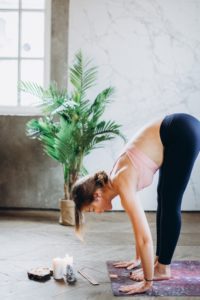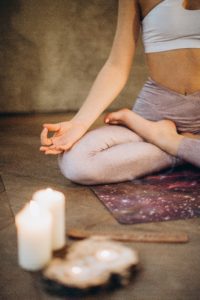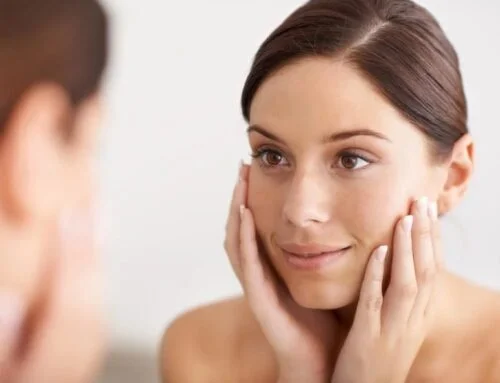Yoga has many benefits for body and mind – but beyond the array of well-known and much-advertised advantages of a regular yoga practice (including improved physical balance), there are also ways in which it can support better hormone balance, too.
What is yoga?
Thought to have originated in modern-day India thousands of years ago, Yoga is an ancient practice combining mental, physical and spiritual elements for harmony and health. ‘Yoga’ is the Sanskrit word for ‘union’ – symbolizing a unity between body, mind and spirit, as well as honoring the connection between the individual self and higher self.
Beyond the asanas or poses (which most are familiar with), yoga entails a detailed and fascinating philosophy which includes the ‘eight limbs of yoga’, covering various directives for a better way of living such as meditation and sense-withdrawal, alongside moral and ethical disciplines such as non-harming and integrity.
Yoga however does offer a great variety of physical benefits when practiced regularly, including increased fitness and flexibility. This has given it a reputation as a purely fitness-based activity, with much focus applied to how postures are executed – but in fact, the principal goal of yoga is to achieve liberation from suffering. With this in mind, we can approach yoga as a holistic practice which can benefit all areas of our lives – including hormone balance.
 How can yoga help hormone balance?
How can yoga help hormone balance?
As a holistic practice, yoga can support better hormone balance in a number of ways. Firstly through reducing stress and anxiety – both or which can have a major impact on hormone health through augmenting cortisol levels and disrupting the menstrual cycle. Yoga also supports metabolic health, which is closely tied to hormone levels, ovulation and menstruation.
In addition, regular practitioners can find that yoga helps them to lose weight or maintain a healthy weight and build muscle mass – another contributing factor for irregular periods or hormonal imbalances especially in the case of conditions such as PCOS.
Yoga poses for hormone balance
These specific yoga poses (asanas) can help to balance hormones and can be safely practiced at home or under the guidance of a yoga instructor. Be mindful never to begin a yoga practice if you are struggling with an injury, and don’t push any pose to the point of feeling pain or intense discomfort.
1. Sphinx (Salanga Bhujangasana) or Cobra Pose (Bhujanghasana)
Cobra pose is simple and accessible for most people, even if you are new to yoga. Cobra pose can help to stimulate ovary function and toning abdominal muscles, as well as strengthening the lower back.
Method: On a mat or soft carpet, lie on your stomach with your hands by your side at shoulder height and your forehead on the ground. Take a deep breath in, and as you exhale, lift your head, shoulders, legs and torso off the ground. For Sphinx, keep your forearms grounded and straight – for Cobra, straighten the arms completely. Look forward and squeeze your glutes and core muscles to avoid putting pressure on the lower back. Hold for 5-10 seconds breathing deeply, then gently lower down.
2. Half-Moon Pose (Ardha Chandrasana)
Half-moon pose can assist with ovarian issues, but it also strengthens the abdomen and the back to alleviate any pain or discomfort in these areas.
Method: Stand in a wide-leg posture with your feet facing the front. Lift your left leg parallel to the floor whilst placing your right hand in front of your right foot. Reach your left hand up to the ceiling as high as you can, lengthening through all limbs as much as possible. Lower down gently, take a few breaths, and repeat on the other side.
 3. Camel Pose (Ustrasana)
3. Camel Pose (Ustrasana)
Camel pose is well-known for its hormone balancing abilities – it is commonly used to support irregular menstrual cycles and regulate hormone imbalances such as estrogen dominance.
Method: Kneel on a yoga mat, keeping the knees about one fist’s distance apart. You can keep your toes tucked under or flat depending on your experience level and how deep you wish to backbend (keeping the toes tucked and higher is best for beginners). Inhale and slowly begin to lift your hips and chest to the ceiling, gradually pushing the pelvis forward. Once you are bending back enough to reach, carefully take hold of the ankles for support and continue to lift the chest and hips high, breathing in and out for a few breaths. Take care when lifting back up, lowering your chin to your chest and slowly making your way back upright. You may then like to go into a child’s pose (kneeling with your forehead on the floor and arms outstretched on the mat) to counter this pose.
If you’re just starting out or have any back trouble, Bridge Pose below may be a safer alternative than camel.
4. Bridge Pose (Setu Bandha Sarvangasana)
Bridge pose supports thyroid function, as the positioning of the body causes a slight restriction on the throat area, causing the breath to stimulate the thyroid gland whilst you are in the posture.
Method: Lie down on your back with your feet hip-distance apart and knees upright. When you stretch out your arms in front of you by your sides, your fingertips should be able to brush the back of your ankles. As you inhale, press your feet firmly downwards as you slowly lift your hips off the ground and bring them as high as possible towards the ceiling. Hold for a few breaths, then slowly lower down vertebrae by vertebrae.
If you are an experienced yoga practitioner, a shoulder stand (or Sarvangasana) can also support with thyroid function.
5. Wide-Leg Forward Fold (Prasarita Padottanasana)
This simple pose is perfect for PCOS and hormonal imbalance, as it increases blood flow to the ovaries as well as relieving stress from the hips and lower back.
Method: Open your legs to a wide stance (as much as is comfortable for you). Put your hands on your hips, inhale deeply and lengthen forward with a straight back. Then as you exhale begin to lower your torso over your legs, with the aim of bringing your head to the ground. Don’t worry if it doesn’t reach right away (or at all) – simply let gravity pull you downwards, placing your hands on the floor or your legs for support. Take a few deep breaths, then slowly rise back up to standing.






